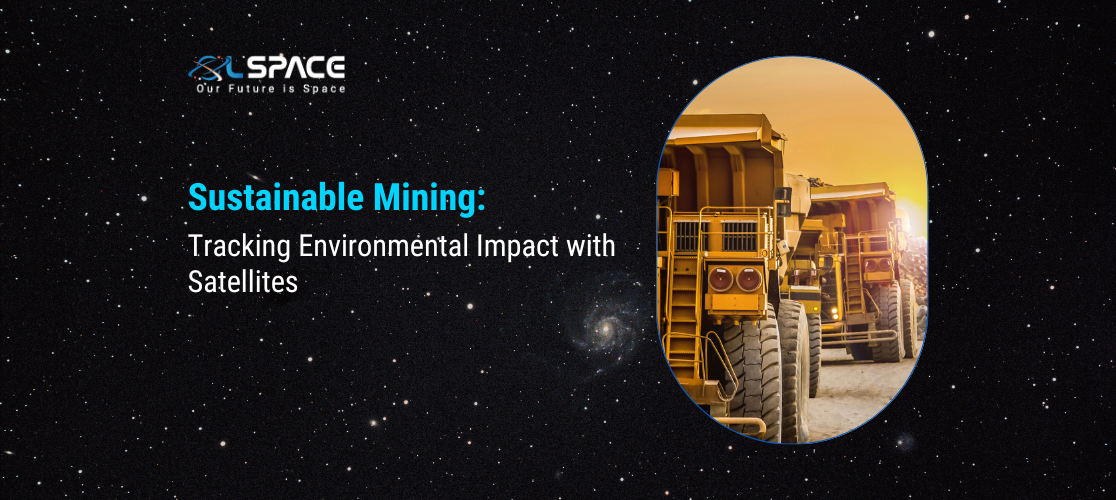19 April 2024
Building Tomorrow: The Role of Satellite Imagery in Infrastructure Planning

Satellite imagery has emerged as a powerful tool for infrastructure planning, enabling engineers, urban planners, and policymakers to make informed decisions and design resilient, sustainable infrastructure for the future. This article explores the multifaceted role of satellite imagery in infrastructure planning and highlights its importance in shaping tomorrow’s built environment.
1. Remote Site Assessment:
Satellite imagery provides a bird’s-eye view of potential construction sites, allowing planners to assess terrain, vegetation, and land use patterns remotely. By analysing satellite images, planners can identify suitable locations for infrastructure projects, evaluate environmental constraints, and minimies the impact on sensitive ecosystems.
2. Spatial Analysis and Land Use Mapping:
Satellite imagery facilitates spatial analysis and land use mapping, enabling planners to understand the spatial distribution of urban development, transportation networks, and natural resources. Through image classification techniques and geographic information systems (GIS), planners can delineate land use zones, identify infrastructure corridors, and optimise the allocation of land for different purposes.
3. Infrastructure Monitoring and Maintenance:
Satellite imagery plays a crucial role in monitoring the condition and performance of existing infrastructure assets. From roads and bridges to pipelines and power lines, satellites capture high-resolution images that enable engineers to detect signs of deterioration, monitor structural integrity, and prioritise maintenance and repair activities.
4. Disaster Risk Management:
Satellite imagery provides invaluable support for disaster risk management and emergency response efforts. In the aftermath of natural disasters such as floods, earthquakes, and wildfires, satellites capture post-event imagery that helps assess damage, identify critical infrastructure vulnerabilities, and coordinate relief and recovery operations.
5. Environmental Impact Assessment:
Infrastructure projects can have significant environmental impacts, ranging from habitat fragmentation to air and water pollution. Satellite imagery aids in environmental impact assessment by monitoring changes in land cover, vegetation health, and water quality over time. By integrating satellite data into environmental modeling and assessment frameworks, planners can evaluate the potential environmental consequences of infrastructure development and implement mitigation measures to minimise harm.
6. Climate Change Adaptation:
Satellite imagery supports climate change adaptation efforts by providing insights into the changing landscape and climate patterns. By monitoring indicators such as sea level rise, land subsidence, and glacier retreat, satellites help planners anticipate future climate-related risks and design infrastructure that is resilient to extreme weather events and changing environmental conditions.
7. Infrastructure Planning in Remote Areas:
In remote and inaccessible regions, satellite imagery serves as a critical planning tool for infrastructure development. By capturing images of remote landscapes and terrain features, satellites enable planners to overcome logistical challenges and make informed decisions about infrastructure siting, design, and construction in remote areas with limited ground-based data.
8. Public Engagement and Transparency:
Satellite imagery enhances public engagement and transparency in infrastructure planning processes by providing visualisations and geospatial information that are easily accessible to stakeholders. By sharing satellite images and maps with the public, planners foster greater community involvement, soliciting feedback, and building consensus around infrastructure projects.
Conclusion:
Satellite imagery is revolutionising infrastructure planning by providing planners and decision-makers with timely, accurate, and comprehensive information about the built and natural environment. From site selection and land use planning to disaster risk management and climate change adaptation, satellites play a vital role in shaping tomorrow’s infrastructure. By harnessing the power of satellite imagery, planners can design infrastructure that is resilient, sustainable, and responsive to the needs of communities and the challenges of the 21st century.
